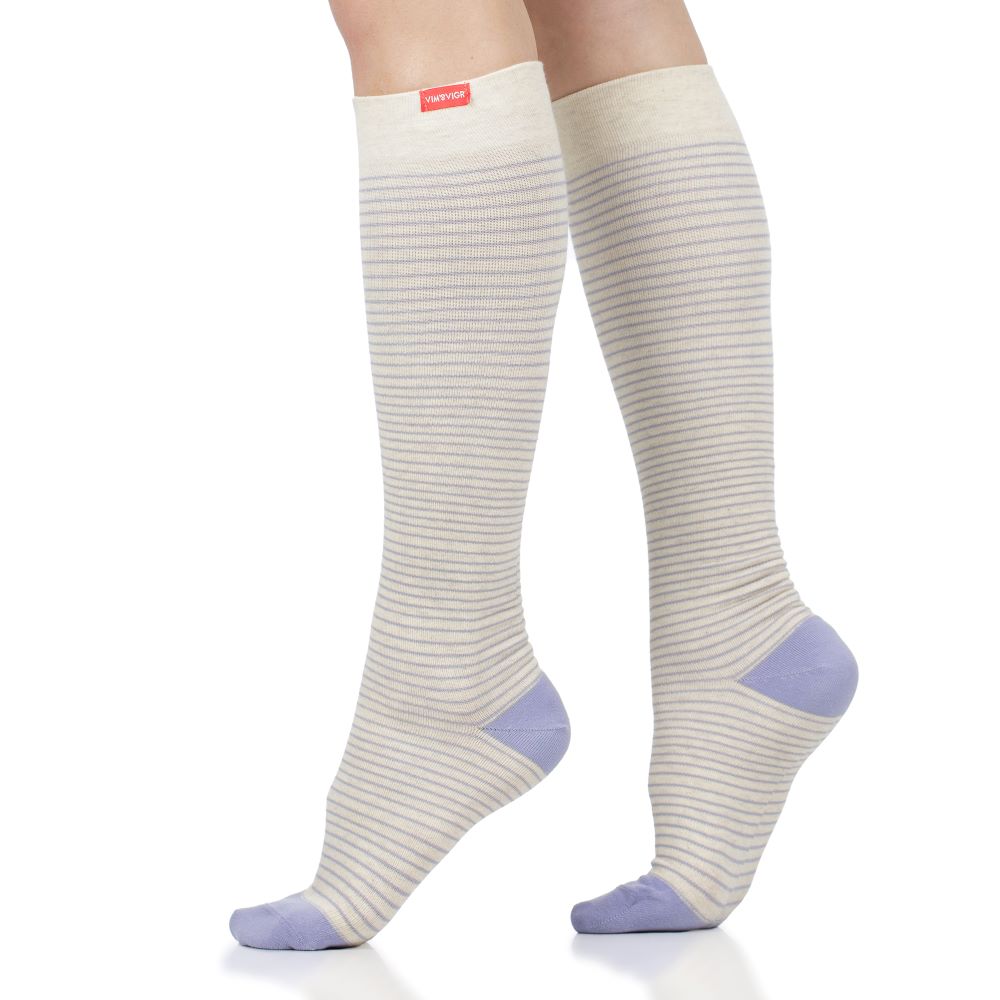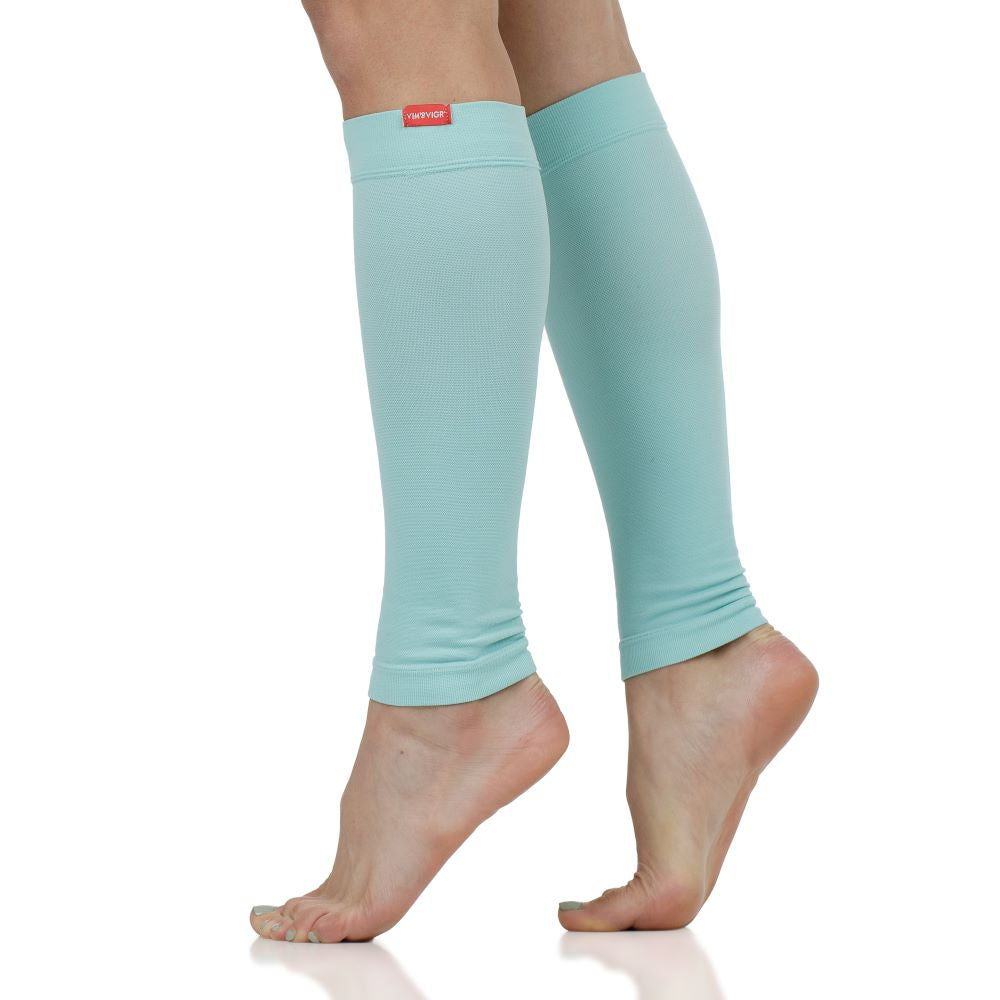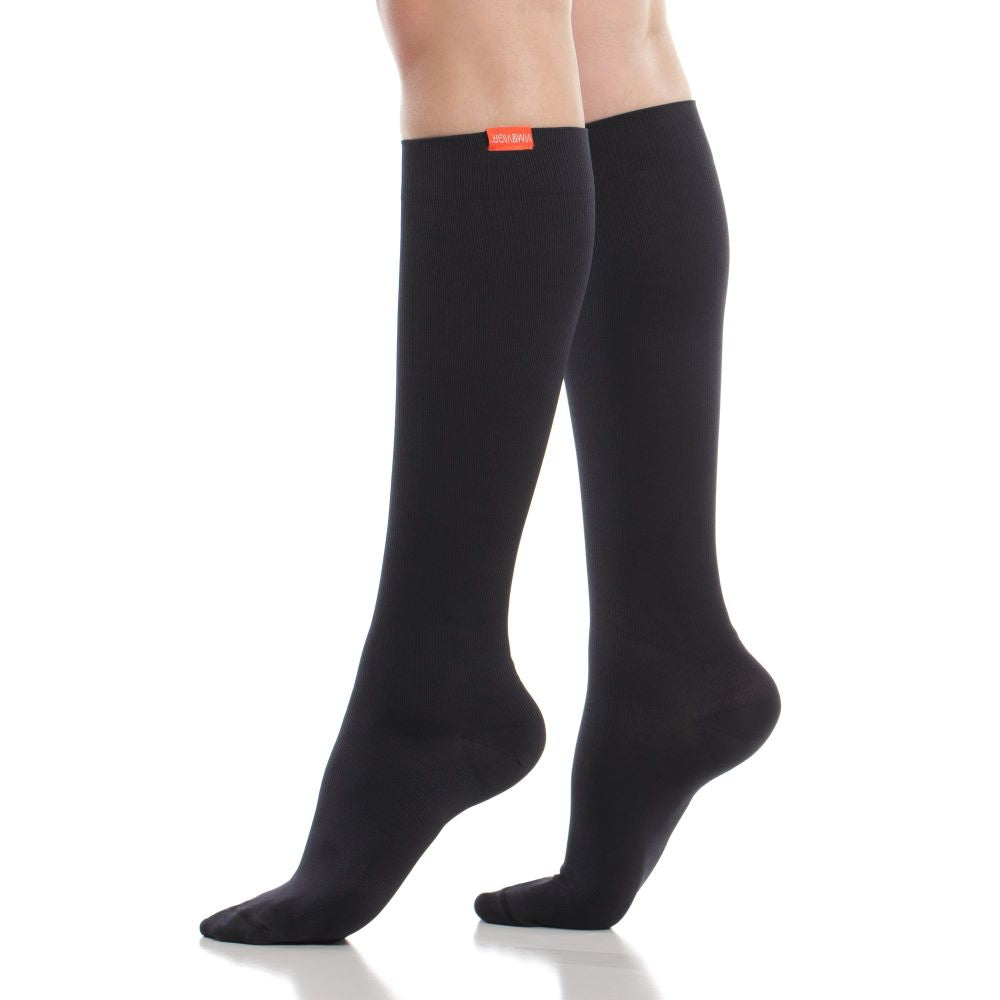Compression Stockings for Cellulite: Do They Help?
Although it may feel like you’re one of the only ones dealing with it, scientific studies have shown that 80 to 90 percent of adult women suffer from cellulite. This unsightly and sometimes painful condition has made us self-conscious and created a whole host of products and solutions around it. Could compression be one of your tools to fight it?
Are compression stockings good for cellulite? By boosting localized blood flow and helping increase lymphatic drainage, compression stockings can play a part in minimizing the appearance of cellulite and in preventing it.
In this article, we’ll look at how compression stockings can help with cellulite and at what you need to know to make the best choice for you.
Do Compression Stockings Help with Cellulite?
If you already have cellulite, boosting blood flow and improving lymphatic drainage in the area can help reduce the appearance of it. Compression stockings stimulate circulation in the leg veins, helping to reduce swelling and discomfort. They are particularly helpful to people with varicose veins or other circulatory problems, helping maintain good blood flow throughout the body.
Compression stockings can also be worn preventatively to boost localized blood flow and attempt to stave off the onset of cellulite. There is no conclusive study to show that this works, but there is a logical connection between an increase in circulation and better lymphatic flow, and avoiding cellulite.
The most effective way to combat cellulite seems to be a combination of treatments and lifestyle changes. Even then, most studies agree that effectiveness cannot be guaranteed. However, some isolated cases have identified patients reporting that the visual aspect of the cellulite can be improved by wearing compression stockings. More importantly, most people report an improvement in wellbeing and comfort levels while wearing compression garments.
How Do Compression Socks Work for Cellulite?
Compression garments apply gentle pressure to the part of the body they’re worn on, stimulating blood flow and soothing aching muscles. Graduated compression socks and stockings are tighter towards the feet and less so as they climb up the body, which further stimulates circulation in the limbs. This reduces the risk of blood and fluid pooling up and causing swelling and discomfort.
Because they stimulate blood flow, while massaging the parts of the body they cover, compression stockings can be seen as reducing the effects of cellulite. They certainly improve lymphatic drainage and prevent fluid build-up, including water retention. Cellulite, however, is caused by a build-up of fat that pushes through the connective tissue under the skin. This is why the link between wearing compression socks and stockings and reducing cellulite is not that strong, since simply boosting blood circulation doesn’t necessarily help reduce the appearance of “orange peel” dimpled skin associated with cellulite.
However, wearing compression stockings helps relieve pain and discomfort in the legs, while helping reduce the risk of swelling and edema. It also helps improve circulation overall and it soothes aching muscles, reducing the time it takes to recover after exercise. People with cellulite can reduce its appearance or prevent the onset of it through lifestyle changes like exercising and reducing fatty foods, so if you’re working out a lot, you’ll benefit from wearing compression socks to improve your recovery.
Benefits of Compression Socks for Cellulite
Cellulite is caused by deposits of fat under the skin, which can be linked to lifestyle or not. In many cases, a reduction in smoking and a low-fat diet have been recommended to fight the onset of cellulite, although the effectiveness of any approaches and treatments has been limited or of short duration. However, compression socks and stockings offer a range of benefits in connection with cellulite and fitness and wellbeing in general, which have been proven scientifically.
Improved Blood Circulation
Compression hosiery stimulates blood flow in the legs and boosts venous return to the heart (especially graduated compression socks and stockings). This means that blood flows freely in the limbs, without pooling around the ankles or being blocked by circulatory conditions.
As a result of the improvement in blood flow, patients feel lighter and more energized when they wear compression garments. The improvement in blood flow also delivers benefits to athletes, as they take less time to recover after workouts (since blood delivering oxygen and nutrients to the muscles travels more efficiently).
For anyone spending a long time on their feet, traveling or having to be immobile for long stretches of time, or being active and looking for an aid to their recovery, compression socks and stockings are effective tools for boosting circulation and reaping the benefits.
Reduced Swelling
When you’re retaining water or suffering from poor lymphatic drainage, you’re likely to struggle with swelling in the legs. This can be more serious for certain people, such as edema during pregnancy. Compression stockings reduce the likelihood of getting swollen legs by boosting circulation and massaging the limbs so they’re not suffering from the push of gravity.
They also help reduce inflammation and swelling after injuries, such as Achilles tendonitis. This is because the improvement in blood flow helps reduce the risk of blood pooling locally, while also delivering oxygen and nutrients to the area where the body is trying to heal.
Lymphatic Drainage Support
Compression therapy can help reduce and control conditions like lymphedema (caused by poor lymphatic drainage). Through the massage of the legs, they help muscles pump fluid away - which helps move the fluid to an area of the body that is draining well.
Minimize the Appearance of Cellulite
It’s believed that compression stockings can reduce the dimpled skin effect from cellulite through the improved blood flow in the affected areas. This has been confirmed by an isolated study in the UK, where subjects declared that they felt the look of their legs had improved.
However, there is reason to believe that an active lifestyle can help reduce the appearance of cellulite through bringing down fat deposits. Compression socks and stockings offer support during sports and help speed up recovery afterwards, so they can be indirectly linked to the improved appearance of cellulite on the skin.
Prevention of Cellulite Formation
There are no conclusive links between wearing compression socks and preventing the formation of cellulite, especially as some very active individuals can also get the “orange peel” effect on their skin. However, many people starting exercise (after leading an otherwise inactive lifestyle) welcome the support and massage of compression garments, either during exercise or afterwards. This can support them in continuing to stay active and can help reduce the likelihood of them developing cellulite.
Choosing The Best Anti-Cellulite Compression Stockings
Any compression garment has to fit right and apply a noticeable amount of pressure in order to work effectively. With compression stockings and socks, you need to look for a gentle, but firm level of pressure and massage on the limbs, as well as for materials and designs that match your lifestyle and your interests.
Selecting the Appropriate Size
To ensure that your socks and stockings fit right, start with a sizing guide and by measuring your calf circumference. Compression socks need to be tight enough not to roll down the leg, but not too tight or they’ll cut off your circulation. Once you put them on, ensure they’re smoothed against the skin, without bunching or folding, which can also apply undue pressure.
Choosing the Right Compression Level
Not all compression stockings apply the same level of pressure. In fact, there are usually three degrees of compression:
- 15-20 mmHg - everyday pressure that you can wear in casual settings or as a recovery garment after you’ve worked out;
- 20-30 mmHg - firm compression that’s usually recommended for people suffering from circulatory problems like varicose veins or during pregnancy to prevent swelling and encourage lymphatic drainage;
- 30-40 mmHg - medically prescribed garments that apply very firm pressure, usually worn to keep blood flowing well after surgery or for patients with more serious conditions like venous insufficiency.
If you have any doubts about compression levels, consult with your doctor first.
Style and Material Options
To ensure you’re as comfortable as possible, look for socks and stockings made from the best adapted material to your situation:
- Cotton is perfect for everyday wear and extremely versatile. You can also find lots of different designs in cotton compression socks. However, it’s not as breathable as other materials and less adapted to sports activities;
- Nylon is great for exercising, as it’s thinner and stretchier than cotton. You can also get dedicated moisture-wicking nylon socks for more humid conditions;
- Merino wool is the perfect choice for all-season moisture-wicking and temperature-regulating socks. It is also hypoallergenic and antibacterial.
When it comes to practicality, you can also choose from full-length compression tights that also cover your feet, to footless tights, to the “classic” knee-high compression socks. If you want to keep your toes out, there are also open-toe compression socks you can pair with sandals.
How to Use Compression Stockings for Cellulite
Using your compression socks for cellulite largely depends on personal preference and how they fit in with your outfits and lifestyle. Compression socks deliver an improvement in blood flow quite rapidly and you’ll feel their soothing massage as soon as you put them on, but their effectiveness then varies from person to person.
Frequency and Duration of Use
There is no set period of time for wearing compression stockings or socks. We advise first-timers to start with a few hours of wear to get used to the feeling of compression, then increase gradually from there (and depending on activity or comfort levels). You can also wear compression socks every day. However, for best results, you should wash your compression socks after every use.
Incorporating Them Into Your Routine
It’s easy to wear compression socks or stockings as part of a warm-up before exercise, to boost blood flow to the legs and warm up the muscles. During walking, running, or playing sports, you can wear these garments for extra support for the joints and the muscles. Afterwards, you can opt for compression socks for recovery while you relax.
Beyond athletic activities, you can also wear compression stockings or socks as part of your everyday life. You don’t need to think of them as having a “special time” for treatment - that’s the beauty of compression wear. They will basically slot right into your everyday life, easy to wear and maintain.
Pairing with Other Cellulite Management Strategies
To counter the effects of cellulite and reduce the likelihood of it appearing, top recommendations include an active lifestyle including exercise, a low-fat diet, and no smoking. Here are some approaches you may find useful:
Exercise. Being active won’t erase the “orange peel,” but stronger muscles can help smooth out the skin a little more. Also, an active lifestyle will improve your health overall;Eat healthily. Cellulite is often associated with poor eating habits and with an excess of fat in your diet. Try to cut down on refined carbs like candy and white bread, eating whole foods and fruits and vegetables; Quit smoking. Smoking is linked to thinning skin, which then sags and makes cellulite more visible. It’s also extremely unhealthy;
- Massage. Massaging the legs helps drain any fluid build-up, boosting the effects of wearing compression stockings.
























Leave a comment